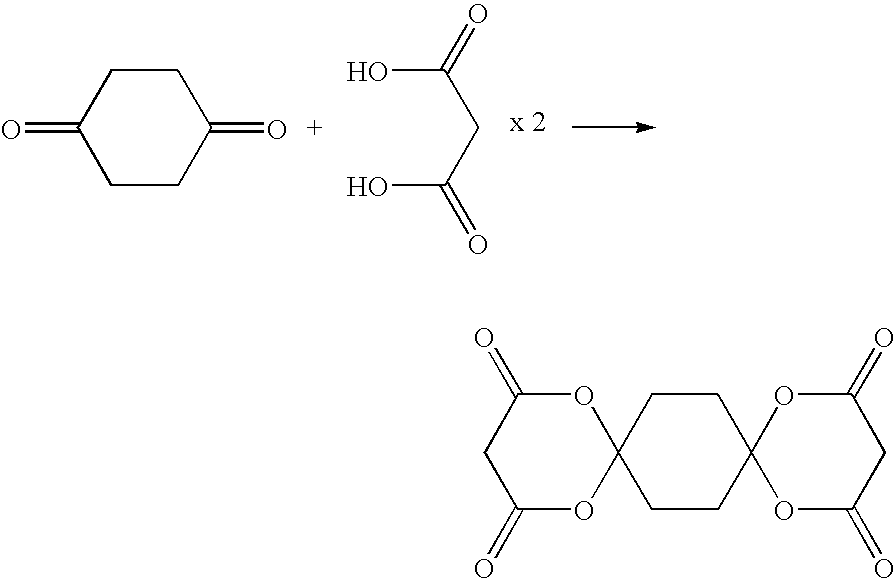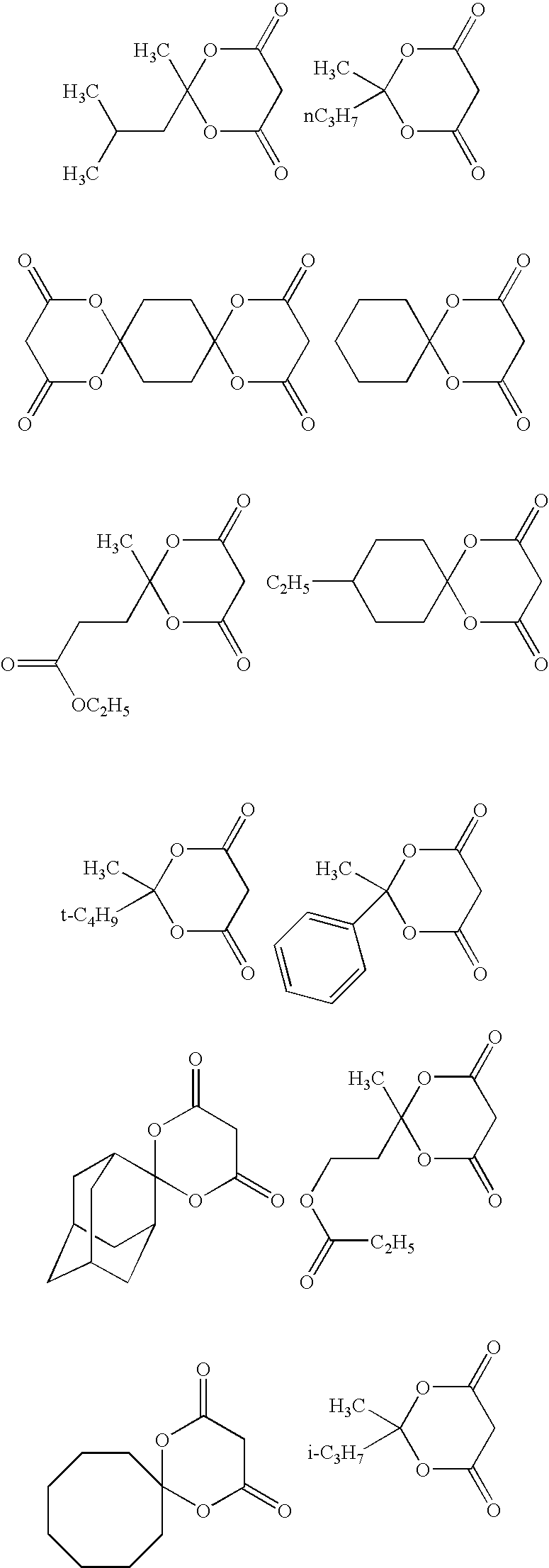Method for producing 1,3-dioxolan-4,6-dione compound
a technology of dioxolan and compound, applied in the field of producing 1, 3dioxan4, 6dione compounds, can solve the problems of deterioration of the product of interest, affecting the safety of explosion protection in industrial scale production, and affecting the safety of explosion protection, so as to achieve convenient and safe industrial production, convenient, safe and stable
- Summary
- Abstract
- Description
- Claims
- Application Information
AI Technical Summary
Benefits of technology
Problems solved by technology
Method used
Image
Examples
##ventive example 1
Inventive Example 1
Synthesis of Compound 1
[0052]The reaction scheme is shown below.
[0053]
[0054]Concentrated sulfuric acid (2 ml) was added to a mixture of acetic anhydride (68.7 g) and malonic acid (50 g), and methyl isobutyl ketone (48.1 g) was subsequently added dropwise thereto at an inner temperature of 30° C. or less. The reaction mixture was stirred at 50° C. for 4 hours, and then toluene (200 ml) and 10% brine (70 ml) were added thereto. The organic layer was fractionated and concentrated, and the residue was crystallized from 2-propanol / water (volume ratio 1 / 3), filtered and washed using a mixed solution comprising 2-propanol / water (volume ratio 1 / 3) and then dried to obtain 58.2 g of the compound 1. Yield 65%.
[0055]MS: M+186
##ventive example 2
Inventive Example 2
Synthesis of Compound 2
[0056]The reaction scheme is shown below.
[0057]
[0058]Concentrated sulfuric acid (2 ml) was added to a mixture of acetic anhydride (68.7 g) and malonic acid (50 g), and 2-pentanone (41.4 g) was subsequently added dropwise thereto at an inner temperature of 10° C. or less. The reaction mixture was stirred at 20° C. for 2 hours, and then toluene (200 ml) and 10% brine (70 ml) were added thereto. The organic layer was fractionated and concentrated, and the residue was crystallized from 2-propanol / water (volume ratio 1 / 3, crystallization temperature 5° C.), filtered and washed using a mixed solution comprising 2-propanol / water (volume ratio 1 / 3) and then dried to obtain 57.9 g of the compound 2.
[0059]Yield 70%.
[0060]MS: M+172
##ventive example 3
Inventive Example 3
Synthesis of Compound 3
[0061]The reaction scheme is shown below.
[0062]
[0063]Concentrated sulfuric acid (1 ml) was added to a mixture of acetic anhydride (55 g) and malonic acid (60 g), and cyclohexane-1,4-dione (20 g) was subsequently added thereto in portions at an inner temperature of 30° C. or less. The reaction mixture was stirred at 55° C. for 10 hours, added to a mixed medium comprising 2-propanol (40 ml) and water (80 ml) at 20° C. and then neutralized to pH 4 with a sodium hydroxide aqueous solution. The reaction mixture was stirred at 15° C. for 1 hour, and then the thus precipitated crystals were filtered, washed using a mixed solution comprising 2-propanol / water (volume ratio 1 / 2) and then dried to obtain 31 g of the compound 3 as pale brown crystals. Yield 61.1%.
[0064]MS: M+284
PUM
| Property | Measurement | Unit |
|---|---|---|
| dielectric constant | aaaaa | aaaaa |
| dielectric constant | aaaaa | aaaaa |
| temperature | aaaaa | aaaaa |
Abstract
Description
Claims
Application Information
 Login to View More
Login to View More - R&D
- Intellectual Property
- Life Sciences
- Materials
- Tech Scout
- Unparalleled Data Quality
- Higher Quality Content
- 60% Fewer Hallucinations
Browse by: Latest US Patents, China's latest patents, Technical Efficacy Thesaurus, Application Domain, Technology Topic, Popular Technical Reports.
© 2025 PatSnap. All rights reserved.Legal|Privacy policy|Modern Slavery Act Transparency Statement|Sitemap|About US| Contact US: help@patsnap.com



